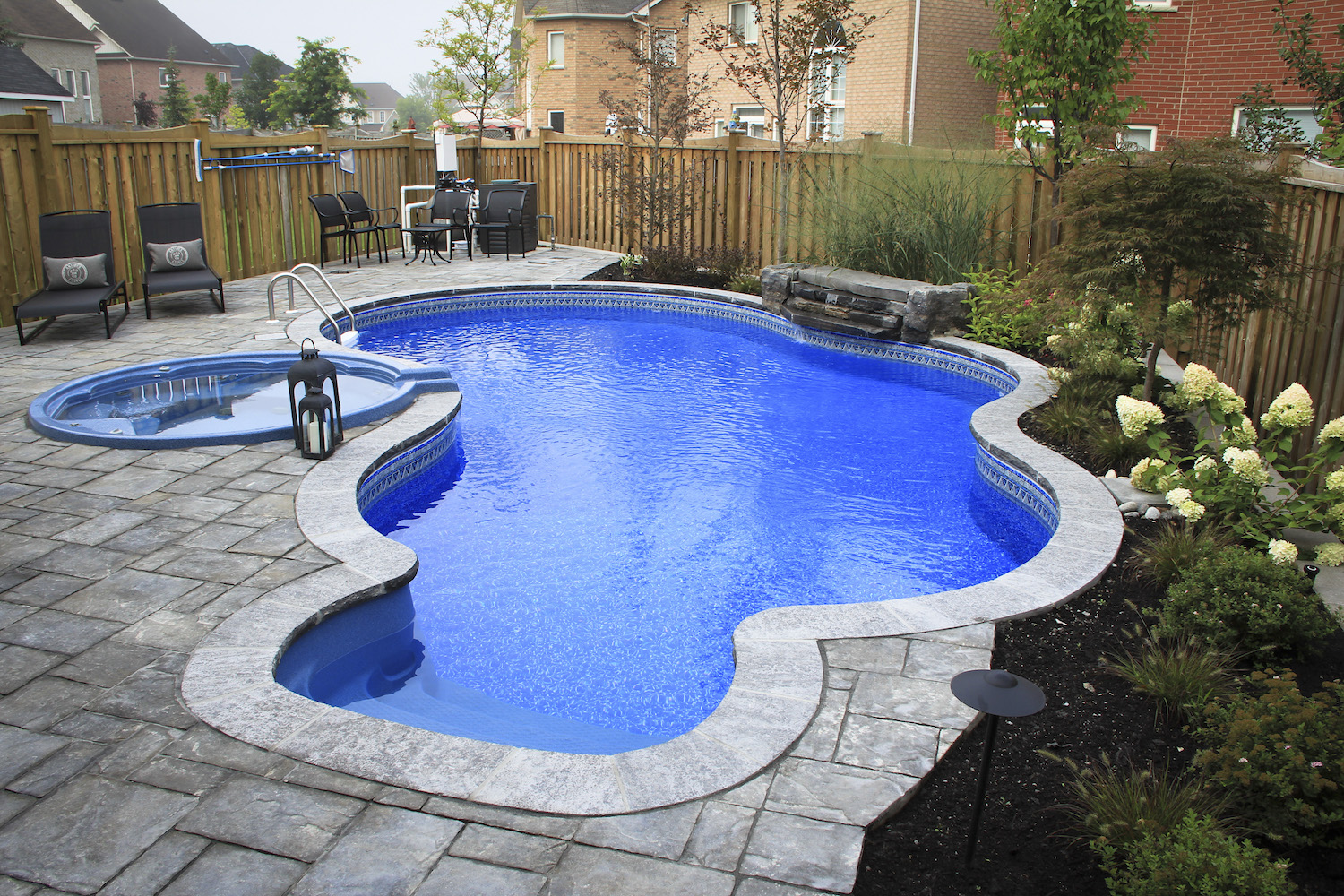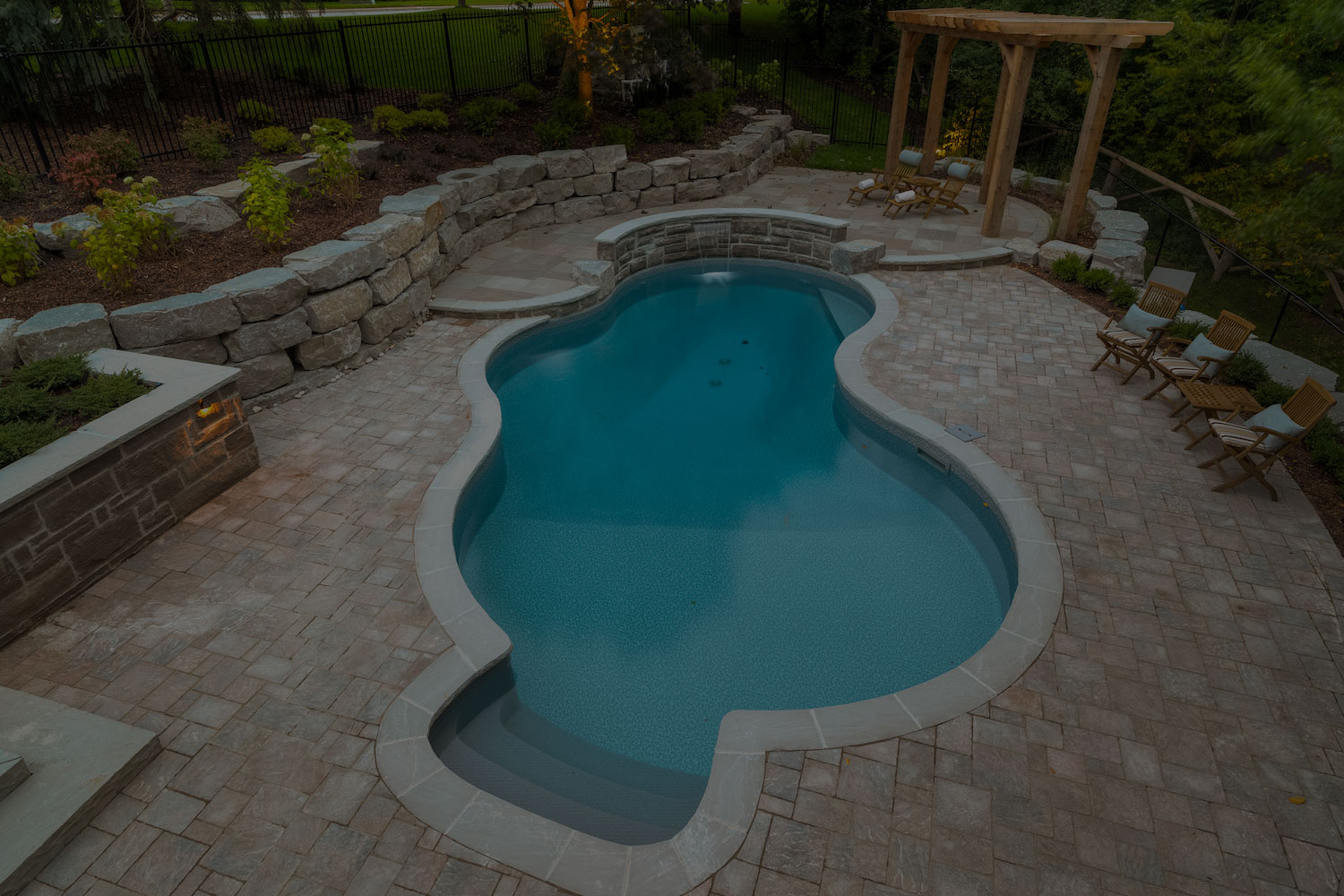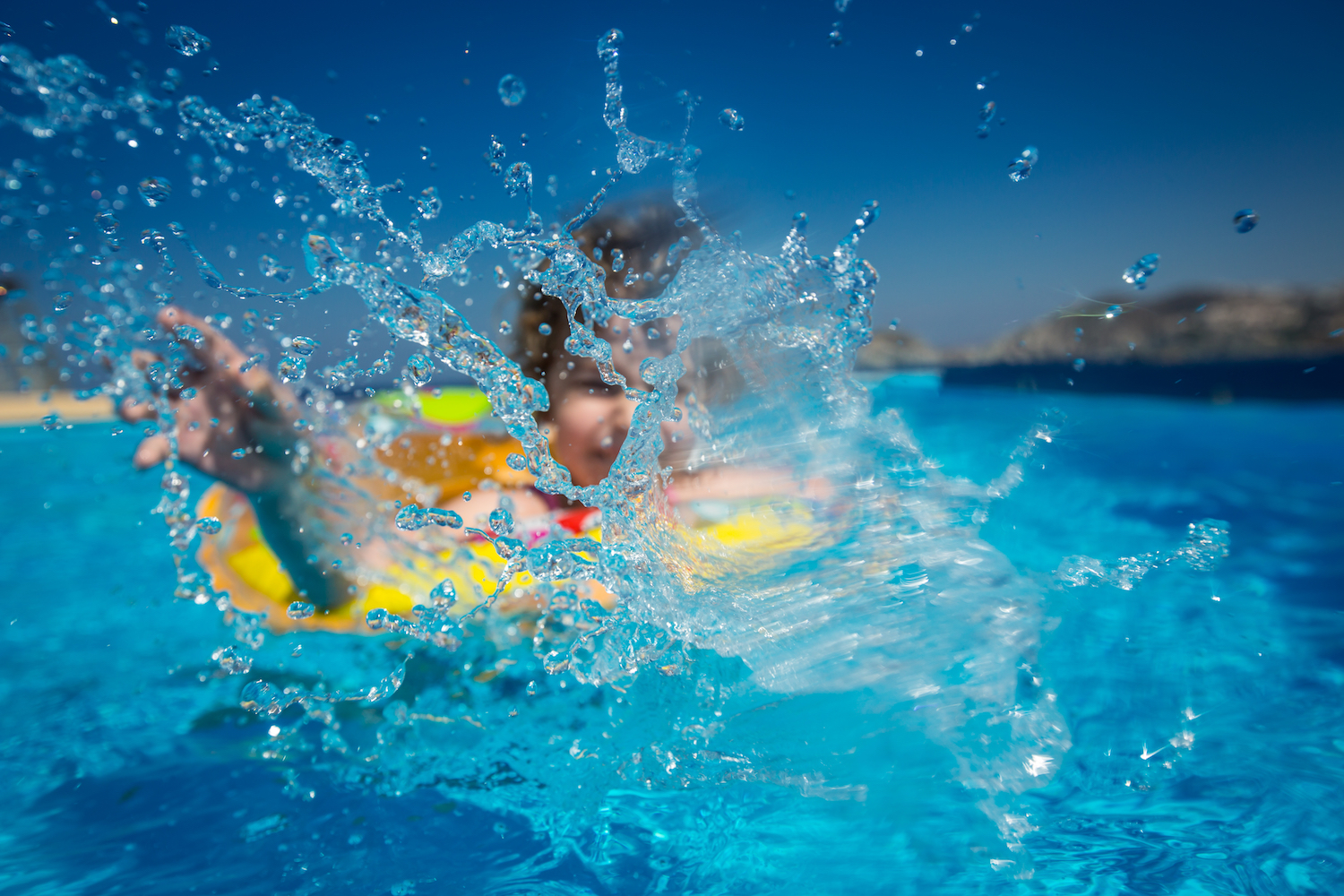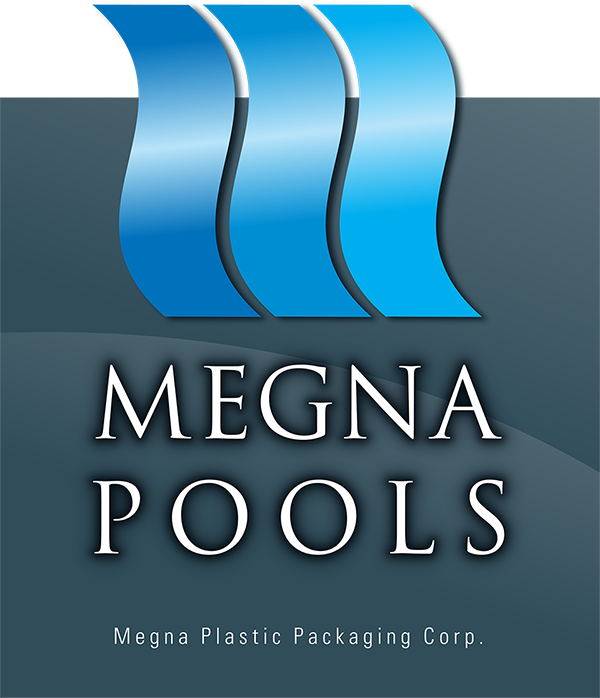
leading VINYL manufacturers
All MEGNA POOL swimming pool liners are made from vinyl purchased from the leading vinyl manufacturers.
highest quality raw materials
Our suppliers manufacture the sheet vinyl using only the highest quality raw materials available on the world market.
research and development
They continue to improve their products through ongoing research and development, focusing on key property requirements of pool liner sheetings.
Quality control & computerized colour monitoring
Quality control testing includes computerized colour monitoring, as well as testing for dimensional stability and compliance with thickness specifications.
MEGNA POOL liners stand up extremely well to the rigours of sunlight, moisture and heat.
Formulations are chosen to ensure excellent physical properties such as:
High resistance to breaking, tearing and puncturing.
Excellent resistance to cracking at low temperatures (-20°F or lower).
Low rate of plasticizer loss resulting in a slow rate of stiffening.
Resistance to degradation from UV radiation.
Base films are resistant to chlorine bleaching, printed liners use custom formulated bleach resistant inks.
Fungicide is added to the vinyl to provide a backup to regular chlorination and algaecide treatment.
A special clear top coat applied over print patterns to maximize protection of the print against abrasion and reduce the adhesion of soil to the liner.
MEGNA POOLS takes this quality vinyl and custom fabricates each pool liner to your specifications using computer designed patterns, skilled craftsmen and constant quality control.
Recommendations for Care of Vinyl Lined Swimming Pools
1. Maintain proper water balance:
a) pH in the 7.2 to 7.6 range.
b) Total alkalinity at 80 to 100 ppm.
c) Calcium hardness: 200 ppm minimum.
2. Maintain free chlorine residual between 1.5 and 2.5 ppm. If free chlorine drifts below 1.5 ppm, algae and bacterial growth can take hold more easily and may cause staining of the vinyl liner.
3. A low pH of less than 7.0 should be especially avoided, since it can cause liner to form wrinkles and with a greater probability if the water is not stabilized with cyanuric acid and chlorine is maintained at or above superchlorination levels for extended periods. For this reason it is recommended that all vinyl lined swimming pools be routinely stabilized with cyanuric acid and that a minimum of 50 ppm be maintained.
4. Pre-dissolve calcium hypochlorite and other slow dissolving sanitizers in a bucket of pool water and add the solution to the pool by filtering through a sieve to prevent undissolved particles from settling on the bottom, otherwise spot bleaching of the liner could occur. Always read and follow manufacturer's instructions given on product labels and containers.
5. Test for the presence of dissolved metals in pool water. Dissolved metals may cause use of staining of the vinyl liner directly or may combine with calcium hardness and form discoloured deposits on vinyl liner. Follow manufacturer's recommendation concerning the chelating materials to inactivate dissolved metals.
6. Chemicals should never be mixed together and added to the pool water at the same time. Certain combinations of the chemicals that individually will have no effect can cause bleaching of the liner if concentration is allowed to remain high in the vicinity of the liner. Always allow a chemical to disperse throughout the pool by means of water recirculation, before adding a second chemical.
7. Do not drain the pool completely for any reason without consulting a pool professional for advice. The older the liner, the higher the risk that the liner will shrink and not stretch back into it's original shape without ripping. Sites with a high water table may also carry the additional risk of structural damage.
8. Never close a pool without circulating the pool water for several hours after the final addition of chemicals. Even liquid chlorine can concentrate in the deep end and cause liner bleaching, if not sufficiently blended with the rest of the pool water.
9. Use a well fitting winter pool cover that is tightly sealed around the entire perimeter of the pool to prevent accumulation of debris such as leaves, worms, etc. during the winter period. Organic matter has the potential to cause staining and/or bleaching of the vinyl liner.
10. Avoid the use of any abrasive cleaning agents or cleaning aids (e.g. such as steel wool, sharp bristled brushes, scouring pads, etc.).
11. Use only manufacturer's recommended vinyl liner cleaner for removing accumulated soil at water line or other soiled areas.

A COMPREHENSIVE GUIDE TO EASY POOL MAINTENANCE
How to ensure the beauty and enjoyment of your pool for
years to come.
With strong, thick custom MEGNA POOL vinyl, you have ensured that your pool liner remains a thing of beauty. We have sourced our vinyl to help your pool liner survive the extremes of nature, sun, heat, chemicals and the harshest conditions of winter even down to -20°.
Liner Care & Maintenance
Our specially formulated swimming pool vinyl gives extended protection against biological growth. However, most liner problems are due to a misuse of chemicals, either too much or too little. For the proper chemical balance, your dealer can provide you with the test kits to measure the chemicals in your pool water.
The pH Check
pH is the measure of acidity/basicity level in your pool. A proper pH level (7.2 to 7.6) not only increases human comfort, but also helps chlorine clean your pool better, because chlorine needs a certain pH level to kill bacteria and algae.
The Water Stabilization Check
All vinyl pools must be routinely stabilized with cyanuric acid in a range between 25 ppm and 50 ppm. A level of less than 50 ppm combined with a pH level of less than 7.0 and/or a chlorine level higher than 3.0 ppm can cause the liner to form wrinkles. Do not use large, single doses of hydrochloric (muriatic) acid for pH or total alkalinity adjustment. If it's not blended sufficiently with pool water, it may chemically attack the liner's print pattern. Ask your pool dealer for the recommended procedure for total alkalinity adjustment.
The Calcium Hardness Check
Calcium levels should be kept at a minimum level of 200 ppm to avoid corrosive conditions. Calcium levels over 500 ppm may cause problems such as cloudy water or scaling on the liner surface.
The Total Alkalinity Check
Your water test kit or your dealer's test will show a total alkalinity reading. Simply put, it's the ability of your pool water to counteract changes in the pH level. Ideally the total alkalinity level should be at 80-120 ppm.
Other Safety Checks
Allow each chemical to circulate throughout the pool before adding a second chemical. Certain combinations of chemicals at a high concentration can cause bleaching of the liner. You should test for the presence of dissolved metals, because they may directly stain the vinyl liner or combine with calcium hardness to form discolored deposits. Each MEGNA POOL Liner has a special transparent topcoat that protects the print pattern from abrasion and soil adhesion. To maintain its effectiveness, avoid using abrasive cleaning agents or cleaning aids.
Closing The Pool
At the end of the pool season, adjust the water level to the dealer's recommended level. Test the pool water and balance. NEVER close a pool without circulating the pool water for several hours after the final addition of chemicals. Chlorine may settle in the deep end and bleach the liner if not allowed to blend with the pool water. Clean and vacuum the pool from top to bottom. Use a proper fitting winter pool cover, tightly sealed around the perimeter of the pool. It will prevent the accumulation of debris such as leaves and insects during the winter. Should you have any questions about your pool, call your dealer - he's your pool professional. And remember, the proper chemical balance, regular maintenance and common sense.
A "Salt Water Pool" is not a chlorine free pool.
Salt water chlorination is a process that uses dissolved salt as a store for the chlorination system. The chlorinator uses electrolysis to break down the salt (NaCl) producing hypochlorous acid (HCIO), and sodium hypochlorite (NaClO). Incorrect use of a salt water chlorination system can cause dangerously high levels of chlorine in a swimming pool.
Due to the way in which chlorine is generated in a "Salt Water Pool" there is no traditional "chlorine smell" or eye irritation (actually chloramines). Therefore a pool may have excessive chlorine levels without these indicators. High levels may dissolve threads and/or bleach swimsuits, towels and vinyl liners. These levels may also corrode stainless steel and degrade coping and decking.
Weekly testing of chlorine levels is mandatory.
Chlorine generators may constantly be adding chlorine to the swimming pool, in some cases the high chlorine level may bleach the testing agents causing false negative chemical readings.
Saltwater pools require properly "balanced" pool water. This includes stabilizer (cyanuric acid) to ensure the proper sanitizing function of the chlorine and the maintenance of correct pH (between 7.2 and 7.8 ppm)
Textured Material
MEGNA POOLS provides textured material for steps, benches and ledges. This material provides a tactile experience only and is not designed to, or intended to, provide any additional slip resistance. The textured material is intended to provide a different “feel” to designate a specific surface (i.e. a step). MEGNA POOLS recommends the use of a handrail on all pool entry steps.
THE MAKING OF A MEGNA POOL











